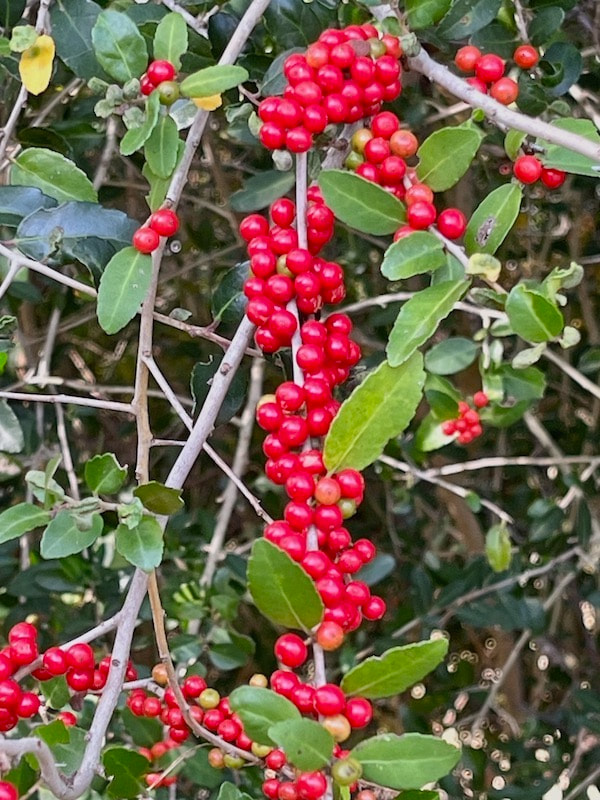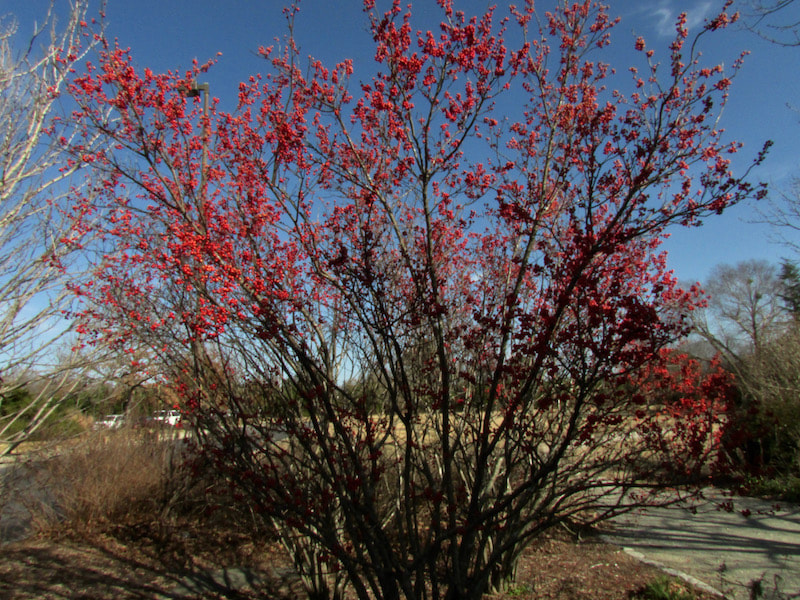|
By Joanne K., Pitt County Arboretum Extension Master Gardener Volunteer With the leaves on the ground and winter upon us, this is a great time to see the bones of your garden to determine if changes and/or additions are needed. Perhaps a shrub didn't live up to expectations or has outgrown its space. Maybe a tree has been damaged beyond recovery. Or your plants are fine, but you'd like to add more color and variety to your landscape in order to attract more birds.
Other natives, such as Dogwood (Cornus florida), Possumhaw viburnum (Viburnum nudum), Carolina Cherry Laurel (Prunus caroliniana), Hawthorne (Crataegus viridis), Eastern Red Cedar (Juniperus virginiana), Southern Magnolia (Magnolia grandiflora), and Southern Wax Myrtle (Myrica cerifera) also attract a variety of birds as their berries have a high fat, carbohydrate, and nutrient content. 8. Eastern Red Cedar berry (Juniperus-virginiana) Enjoy the year-round beauty of native plants and the colorful array of birds they attract by adding these plants to your garden.
For information about specific native plants, go to https://plants.ces.ncsu.edu/ For information about the plants birds prefer and when these plants produce berries, go to: https://content.ces.ncsu.edu/managing-backyards-and-other-urban-habitats-for-birds For information on landscaping for wildlife, go to https://content.ces.ncsu.edu/landscaping-for-wildlife-with-native-plants Photos: 1. Yaupon Holly (Ilex vomitoria)—Joanne K. 2. Winterberry Holly—Female (Ilex serrata x verticillata 'Sparkleberry')—Joanne K. 3. Native Holly (Ilex opaca)—Joanne K. 4. Beautyberry Shrub (Callicarpa americana)—Joanne K. 5. Berry—Dogwood (Cornus florida) Fruit-Fall-Moore Co., NC Cathy DeWitt CC BY-NC-ND 4.0 6. Possumhaw Viburnum (Viburnum nudum)—Joanne K.7 7. Cedar waxwing in Eastern Red Cedar (Juniperus virginiana) Janet and Phil CC BY-NC-ND 2.0 8. Berry—Eastern Red Cedar (Juniperus virginiana) CameliaTWU CC BY-NC-ND 2.0
1 Comment
|







